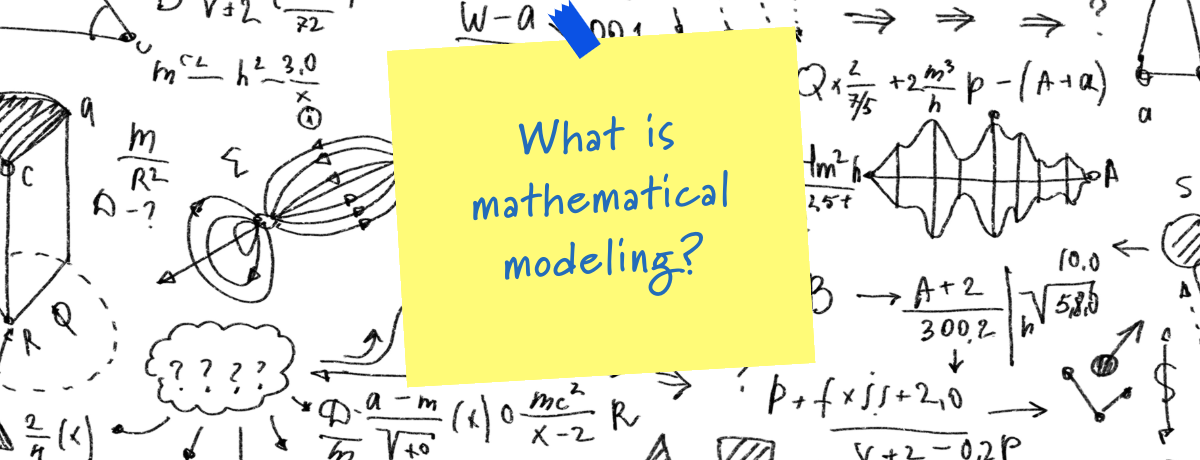
What Is Mathematical Modeling, Really?
So, what is mathematical modeling? The GAIMME Report stresses that modeling is a process… the process of creating a mathematical representation of a real-world scenario to make a prediction or provide insight. But historically, this topic was often presented as a library of models.
In this post, we will explore the definition of mathematical modeling and the evolution of the term through the framework of a popular meme:
- Tired: Math Modeling is a noun.
- Wired: Math Modeling is a verb.
- Inspired: Math Modeling is a mindset!
Tired: Math Modeling Is a Noun
If you pick up almost any traditional text in mathematical modeling, you will find chapters about various types of models as well as tools to apply them. Depending on the level of the text, it could include parameter-fitting methods for linear or exponential models, or it might include a section on numerical methods for stochastic partial differential equations.
These types of texts have presented the idea of modeling as something to be taught in an upper-level course for mathematics undergraduate students, or even graduate students. Unfortunately, this narrow view of math modeling as a noun, specifically as a set of models or tools to apply them, is limiting in three important ways:
- Viewing modeling as a noun fails to capture perhaps the most important parts of the modeling process — those first steps when we start to understand the problem and mathematize it.
- The noun “modeling” is too static. Dynamic problems call for dynamic modeling. As a noun, modeling loses its dynamic element of interacting with the problem and the various ways to refine and improve the model.
- By focusing on advanced models and tools, the “modeling is a noun” view is exclusionary, as it gives the impression that modeling is a skill for the elite club of those who have a significant mathematical foundation.
In contrast, math modeling appears as a vital component of scientific work in nearly every scientific discipline. It is used for research in many areas of study, yet the teams do not contain people with formal, advanced, mathematical training. So modeling is simply not a noun.
Wired: Math Modeling Is a Verb
In response to the perspective that modeling is about learning a set of advanced models and tools, we’ve heard this mantra from several authors of the GAIMME Report: “We aren’t talking about models. We are talking about modeling.” And we think they are, in many ways, right.
Mathematical modeling is a process that starts with a real-world issue, introduces assumptions, transforms the issue into a tractable math problem, performs an analysis, and then translates the mathematical findings into meaningful and useful outputs in the context of the original problem.
Overall, the modeling process is a way of manipulating and transforming an issue into a problem that we can solve. We are creating a representation of the issue (or part of the issue) in a way that we can leverage mathematical tools to help better understand or address the issue by solving the problem we created from it.
Inspired: Math Modeling Is a Mindset
We don’t disagree with the GAIMME Report, but we do want to push this idea of modeling as a verb even further. Viewing modeling as a verb focuses attention on the process and the problem, but it leaves out the most important part of the process, which is the modeler.
When taught well, modeling opens our students’ minds to a new way of seeing the world. As we teach our students to model, we help them see that there are many ways to model any one problem, and we can encourage student creativity to develop and test new approaches to address the unique challenge of each problem.
A math modeling mindset is inclusionary, promoting autonomy and authority as students make and defend their modeling choices, while respecting diverse perspectives about the inputs, outputs, and how they are connected.
With the mindset perspective, modeling becomes part of a broader skill set. Modeling becomes a habit that your mind uses to see and shape your world.
So ultimately, if we can empower our students and give them the gift of a modeling mindset, modeling becomes more than a tool or a process; it becomes a way to think, understand, decide, and live.
This post has been adapted from an article that appeared in Consortium, entitled “What is Math Modeling? It's a Noun! It's a Verb! It's a Mindset???” by Chris Arney, Amanda Beecher, and Jessica Libertini
Written by
COMAP
The Consortium for Mathematics and Its Applications is an award-winning non-profit organization whose mission is to improve mathematics education for students of all ages. Since 1980, COMAP has worked with teachers, students, and business people to create learning environments where mathematics is used to investigate and model real issues in our world.
